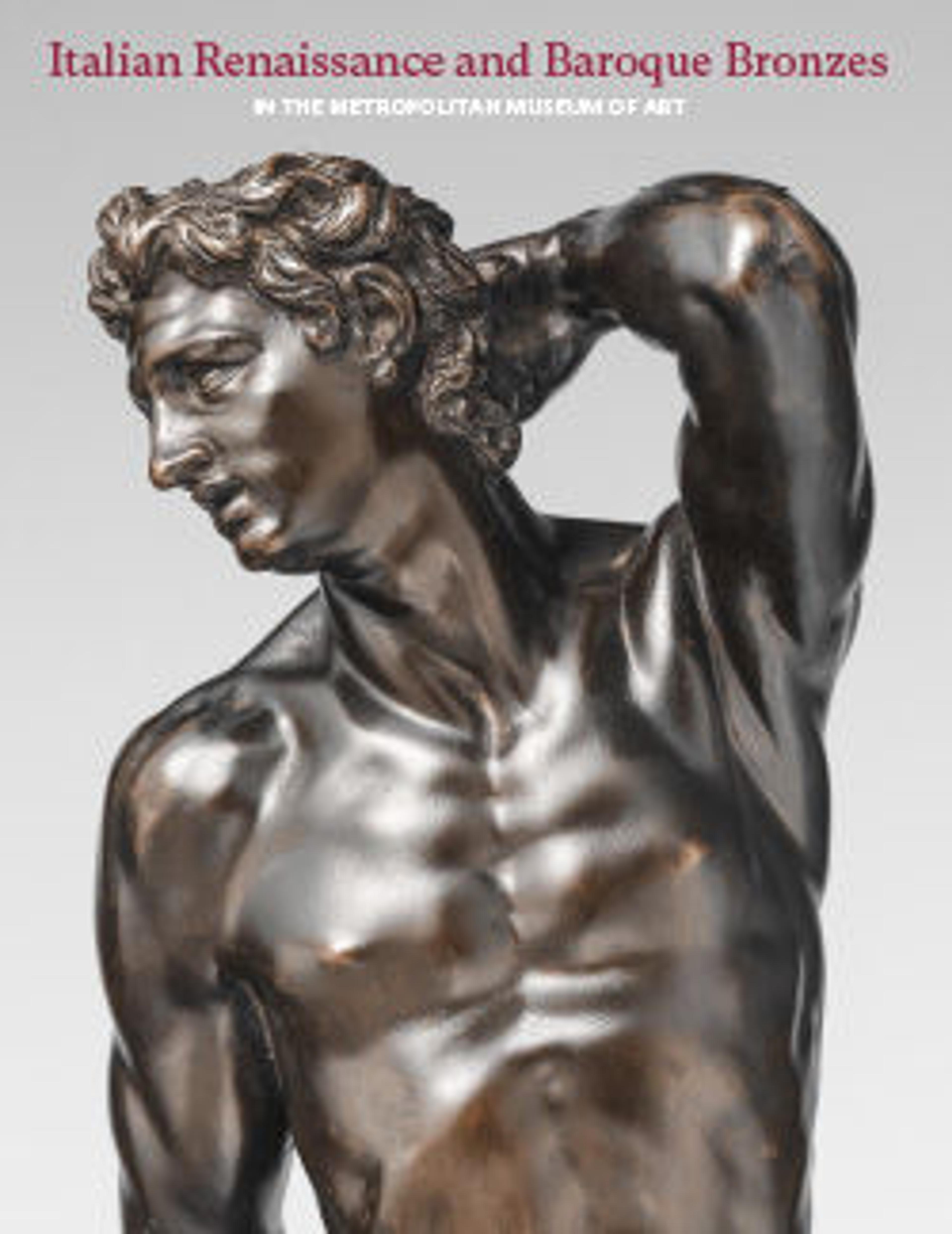Jupiter
Benvenuto Cellini worked at the court of François I on a projected set of twelve silver statues of divinities to serve as candelabra. The Jupiter alone seems to have reached completion, and when he returned to Florence in 1544, he must have brought a wax or clay model with him. Cellini said the god’s right hand held a torch while in his left was “the globe of the world.”[1] At least four reductions similar to the present one survive, and none retains a globe. Ours, with the oldest provenance but only back to around 1863, holds instead an odd horizontal stretch of fabric, and that in the Detroit Institute of Arts a cloth bunched like a damp towel.[2] The others, all with variations, are in the Museum für Kunst und Gewerbe, Hamburg, the Museo Arqueológico, Madrid, and the former collection of Perry Rathbone, Boston and New York; another was stolen from a New York collection in 1975. It is generally agreed that ours is the best of them.
A previous ascription to Pietro da Barga, advanced by the current writer in 1977, rested on stylistic analogies to his documented bronzes. The beefy facial features, flaccid modeling including an indented arc to describe the spine, and a curious fleur-de-lis shape for pubic hair occur in Pietro’s Farnese Hercules (cat. 102). The facture, however, is different,[3] leading us to abandon that attribution.
-JDD
Footnotes
(For key to shortened references see bibliography in Allen, Italian Renaissance and Baroque Bronzes in The Metropolitan Museum of Art. NY: The Metropolitan Museum of Art, 2022.)
1. Cellini 1910, p. 324.
2. DIA, 38.102; see Darr et al. 2002, cat. 107.
3. Radiographs show very thin, even walls with wax-to-wax joins in the shoulders and core pin holes plugged with driven wires; the absence of obvious bubble or drip marks suggests a clay core. In contrast, Pietro’s Farnese Hercules was cast with transfixing core pins, a plaster core, and threaded plugs. R. Stone/TR, November 14, 2010.
A previous ascription to Pietro da Barga, advanced by the current writer in 1977, rested on stylistic analogies to his documented bronzes. The beefy facial features, flaccid modeling including an indented arc to describe the spine, and a curious fleur-de-lis shape for pubic hair occur in Pietro’s Farnese Hercules (cat. 102). The facture, however, is different,[3] leading us to abandon that attribution.
-JDD
Footnotes
(For key to shortened references see bibliography in Allen, Italian Renaissance and Baroque Bronzes in The Metropolitan Museum of Art. NY: The Metropolitan Museum of Art, 2022.)
1. Cellini 1910, p. 324.
2. DIA, 38.102; see Darr et al. 2002, cat. 107.
3. Radiographs show very thin, even walls with wax-to-wax joins in the shoulders and core pin holes plugged with driven wires; the absence of obvious bubble or drip marks suggests a clay core. In contrast, Pietro’s Farnese Hercules was cast with transfixing core pins, a plaster core, and threaded plugs. R. Stone/TR, November 14, 2010.
Artwork Details
- Title:Jupiter
- Modeler:After a model by Benvenuto Cellini (Italian, Florence 1500–1571 Florence)
- Artist:Probably cast by Pietro da Barga (Italian, Florence, active 1574–88)
- Date:late 16th century
- Culture:Italian, probably Florence
- Medium:Bronze
- Dimensions:Overall (confirmed): 11 5/8 × 5 5/8 × 3 1/4 in. (29.5 × 14.3 × 8.3 cm)
- Classification:Sculpture-Bronze
- Credit Line:Gift of Irwin Untermyer, 1964
- Object Number:64.101.1446
- Curatorial Department: European Sculpture and Decorative Arts
More Artwork
Research Resources
The Met provides unparalleled resources for research and welcomes an international community of students and scholars. The Met's Open Access API is where creators and researchers can connect to the The Met collection. Open Access data and public domain images are available for unrestricted commercial and noncommercial use without permission or fee.
To request images under copyright and other restrictions, please use this Image Request form.
Feedback
We continue to research and examine historical and cultural context for objects in The Met collection. If you have comments or questions about this object record, please contact us using the form below. The Museum looks forward to receiving your comments.
